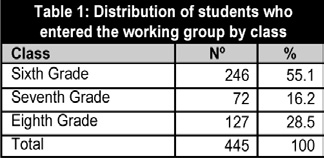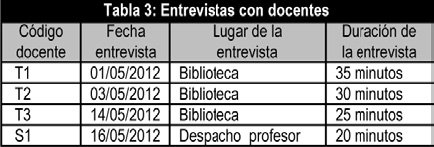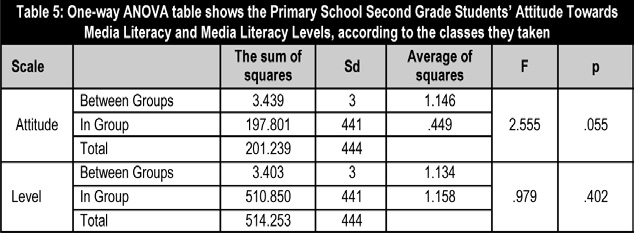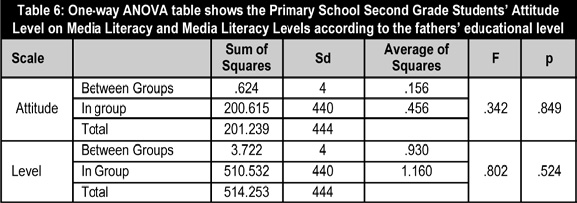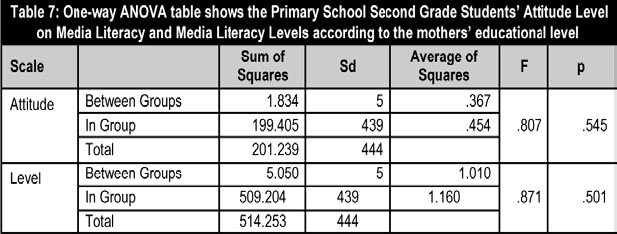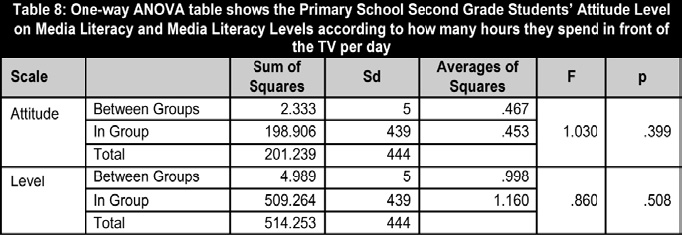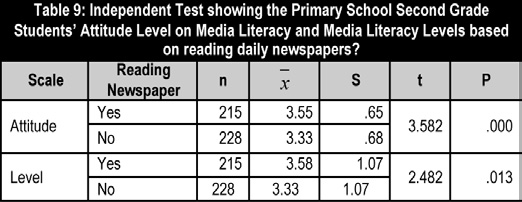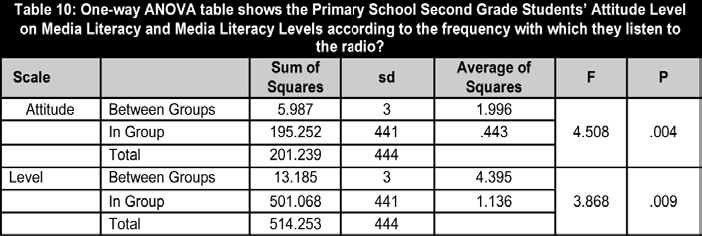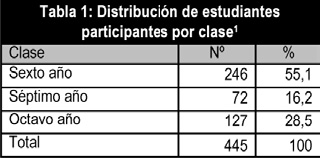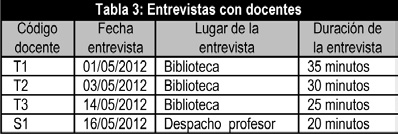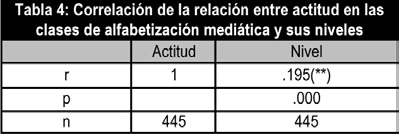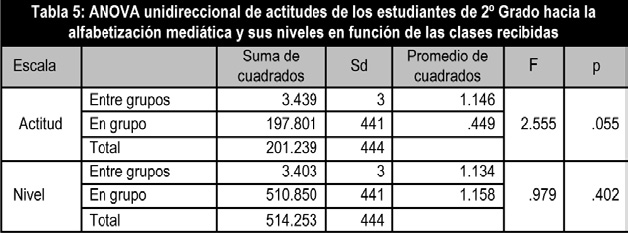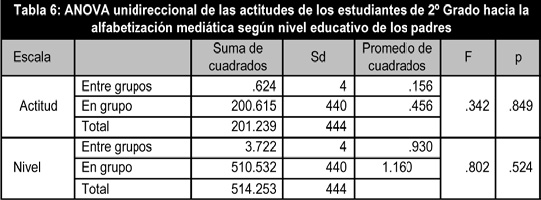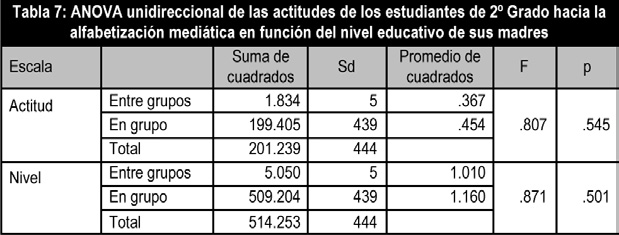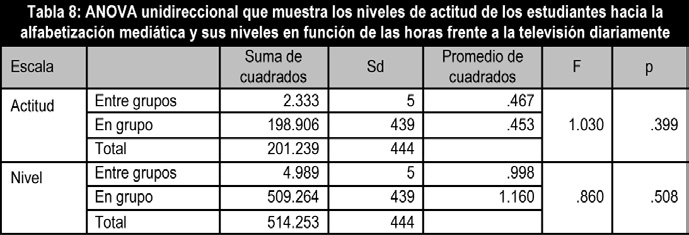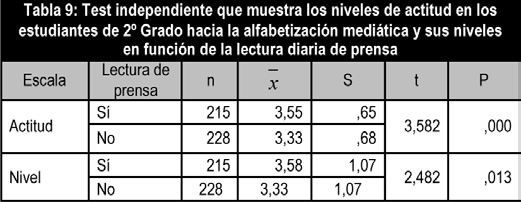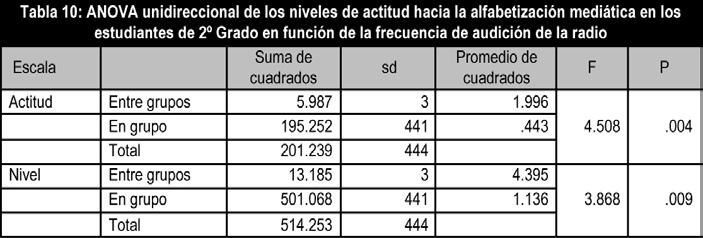Pulsa aquí para ver la versión en Español (ES)
Abstract
In this study, interviews were conducted with teachers of media literacy to determine the needs of media literacy teaching in the classroom. As a result, we see that teachers need in-service training for classes in media literacy; the media literacy lesson is adequate in terms of content but inadequate as an activity. Students indicated significant changes in their perceptions of media after taking these lessons. A «Media Literacy Level Scale» and a «Media Literacy Attitude were applied to determine students’ level and attitude. The information on students was obtained through the «Private Information Form». As a result, a positive, low-level and significant relationship was found between the students’ attitude levels on media literacy lessons and their media literacy levels. The study’s conclusion is that there is no significant difference between the media literacy classes taken by the primary school second grade students and their attitudes and levels on media literacy. Also, no significant difference was found between the educational levels of the parents of these second graders and their attitudes and levels on media literacy. However, there was a significant difference between the students’ daily newspaper reading habits and the frequency of listening to the radio and their attitudes on media literacy classes and media literacy levels.
1. Introduction
Media is a word of Latin origin and it originates from Medium, Mediae which means belonging to the public (Bülbül, 2000: 1). This author describes the media as the whole mass media that includes print media (newspapers, magazines), electronic media (radio, television, cinema and film) and planning of cinevision, multivision, hypermedia, Internet, computing, video, books, tele-photos, radio-photos, lifax, frequencies, telephone satellites, telex, fax and telecommunication, all of which enable communication through the written word, audio or video. Media is a wide area which covers all mass media. But according to Potter (2001), we live in two different worlds; one is the media world (the virtual world contains all mass media where we can access messages), the other is the real world (the world where we come together and communicate with our friends and the people around us and exchange ideas) (Kutoglu, 2006: 62). The media that reach everyone (young and old people) to a greater or lesser extent not only inform but also entertain; they affect and sometimes change the individual’s value judgments, attitudes and beliefs (Özad, 2006: 56). The media that seek out all people of all ages can easily influence the individual, who sometimes realizes that he is subjected to media influence and is consciously affected, but on other occasions he can be unaware. Samuelson (2003) declares that individuals mostly do not realize the effect mass media news, advertisements or messages have on the clothes they wear, their lifestyle or political opinions; furthermore, people feel happy when they act, talk or live just like those they see in the media (Karaman & Karatas, 2009: 800). Media not only influence the individual, they also influence society. Media as an effective force acting on society are considered to be part of the fourth estate after legislation, enforcement and pronouncement, and they can even affect the other three estates from time to time, not only in our country but also around the world (Seylan, 2008: 9).
According to Potter (2001), media literacy has many definitions. It has different modes. It is relative and depends on the person. Audience-oriented, it changes according to the conscious and the known. Nobody is completely media literate. It is a complicated concept, not simple (Efe-Özad, 2006: 56). The most common definition of media literacy is defined as the capacity to access a variety of messages and gain the capacity to analyze, evaluate and communicate with them (Çöloglu & Özalpman, 2009: 195). According to the definition from «The National Leadership Conference on Media Literacy», media literacy includes the ability to analyze, evaluate and respond to messages (RTÜK [Radio and Television Supreme Council], 2007). Media literacy requires the ability to access media messages, analyze and evaluate them. Media literacy is a skill of critically thinking that allows the user to interpret the information received through the channels of mass media and enables them to develop independent decisions about the content (Erdogan, 2010: 50). Media literacy is the capacity to take independent decisions about media content and think critically.
According to Baran (2004), media literacy is the ability to take pleasure from media content through comprehension and appreciation of media literacy (Özonur-Çöloglu & Özalpman, 2009). Media literacy is not only a means for understanding media content, it is also about feeling secure in an appreciation of the media. Today media literacy has the same meaning as in the ninth century (Apak, 2008: 13). In the study by Sonia Livingstone and Maria Bovill, «Young People, New Media» (1999), they define media literacy as the ability to appraise critically, gaining relative values from information of different sources, and the capacity to understand the structure, form, power and limitations of screen-based content (Thoman & Jolls, 2005: 9; Apak, 2008: 13). Media literacy requires a critical point of view regarding media tools; it particularly requires the ability to comprehend tools such as TV and Internet. Media literacy can be defined as a term describing a person who deserves the title of media master as a result of an educational process which requires educational organization, background knowledge and capacity to detect and differentiate media messages (reconstructed) and make comments about them (Taskiran, 2007: 7).
Media literacy requires the skill to realize that the messages taken from media are reconstructed in the media. An individual needs a different skill, background knowledge and educational organization in order to be media competent. In order to be media literate, we should be in touch with media. The individual who is in touch with media can begin to access information about mass media. Then, he acquires a critical understanding of the mass media. Media literacy (media competency) means acquiring capabilities to undertake appropriate actions in the world formed by media (Alver, 2011: 11). Media literacy is a framework that summarizes life and it is a potential skill that requires continuous updating year-on-year, and which changes the quality of life completely (Sadriu, 2009: 54). Media literacy gives information to the individuals about media tools and improves the quality of their lives.
2. Method
This research presents the views of teachers and students on a media literacy class for second grade primary school pupils. What is the extent of the relationship between the attitudes on media literacy of second grade primary school students who have received media literacy education and their media literacy levels?
Are their attitudes on media literacy and their media literacy levels different according to their 1) class year? 2) father’s educational levels? 3) mother’s educational levels? 4) the hours they spend watching TV per day? 5) their habit of reading daily newspapers? 6) the frequency they listen to radio? 7) What are the opinions of the media literacy teachers in the second grade of primary school regarding media literacy? This study is configured with a mixed methodology including a survey as part of the quantitative measurement process, and interviews as part of the qualitative measurement process.
2.1. The working group
This research working group includes the students who take the media literacy lessons as optional subjects and the teachers who give those classes in the primary schools of Konya-Eregli.
According to table 1, the working group consisted of 246 students from sixth grade, 72 students from seventh grade and127 students from eighth grade.
The interviews were carried out with four teachers, two men and two women. The statutory tenure of teacher T1 is 12 years, of teacher T2 18 years, teacher T3 7 years and teacher S1 10 years. Three teachers graduated as Teachers of Turkish and one in Social Sciences.
The interviews were conducted between 01/05/2012 – 16/05/2012. The longest interview was 35 minutes, with T1, and the shortest was 20 minutes, with S1. The teachers had had no in-service education on media literacy lesson.
2.2. Data collection tools
This study used a «Teacher Interview Form», an «Attitudes Scale on Media Literacy» and a «Media Literacy Level Assessment Scale» as research tools. During the interview with teachers, the interviewer posed the questions in the same order and phrased them in same way, and tried to minimize his impact and subjective judgments. The interviews were recorded with the permission of the interviewees. All participants were given a code number in order to analyze the data obtained from the interview. Turkish Teachers were coded as T1, T2 and T3 while the Social Sciences Teacher was coded as S1.
The scale applied to the students consists of three parts. In the first, there are 8 questions under the heading «Private Information Form», which aim to determine how many hours a day the students spend watching TV and the educational level of their parents.
In the second part, there is a 31-item scale named «Attitudes Scale on Media Literacy» that aims to determine the students’ attitudes towards media literacy (Elma & al., 2009a). The «Media Literacy Attitude Scale» is a 4-factor scale that measures the alpha internal consistency coefficient and item-total correlations as a reliability symbol for each sub-factor; the articles of the scale are seen to be distinguishing. A five-point Likert rating scale was used to determine the students’ ideas. The scale consists of these choices: (5) I completely agree, (4) I agree, (3) I have no idea, (2) I disagree, (1) I strongly disagree.
In the third part, there is a «Media Literacy Level Assessment Scale» prepared by Karaman & Karatas (2009), whose purpose is to determine teacher media literacy levels. Some articles are adapted in accordance with the elementary school students’ levels of understanding.
The data collection tool consists of three parts to determine the students’ socio-demographic characteristics, the relationship between the students and mass media, and the students’ media literacy levels. The questions are rated as five-point Likert including 1= Never, 2=Rarely, 3=Sometimes, 4=Mostly, and 5= Always. The articles on the scale are classified as three factors; «having true knowledge», «ability to analyze and form a reaction» and «ability to hear/see the implicit messages».
2.2.1. Structural validity and reliability of the media literacy level assessment scale
It was decided to make a factor analysis of the study in order to determine the validity of the scale. First, KMO and Barlett tests were done in order to test whether the scale was appropriate for the analysis. In this context, the KMO test score should be .50 or higher, and the Barlett globalization test should be statistically significant (Jeong, 2004: 70). As a result of this study, the KMO test score was 93 and the Barlett globalization test (P<0.01) result was significant. In the exploratory factor analysis, the limit value is taken as .45 for the factor loading, and the varimax rotation technique, as one of the vertical techniques, was used to find items with a high correlation and to facilitate determinations on the factors. Two factors were obtained as a result of the exploratory factor analysis on the Media Literacy Level Assessment Scale. The first factor reached 28.45% and the second factor 27.97% of the total variance of the scale. The total size of the scale was 56.42%. For Büyüköztürk (2002: 119), it is sufficient for the rate variances to be explained if the scale has one factor that is 30% or higher. The data obtained from the factor analysis emphasize that the validity of the scale is high level.
The Media Literacy Level Assessment Scale initially included 16 articles, but then it was decided to discard those substances (5, 16) which did not figure in any article or which had a load value under .45, thus reducing the scale to 14 articles. Büyüköztürk (2002: 119) indicates that if the factor co-variance of the substances is close to 1 or higher than .66 then it is a good solution, but, in practice it is generally difficult to accept. After factor rotation, the first factor is seen to include 7 substances (8, 10, 11, 12, 13, 14, 15), as does the second (1, 2, 3, 4, 6, 7, 9). Cronbach’s alpha reliability coefficient was performed to determine the reliability of the scale. According to the statistics, Cronbach’s alpha value was.93, and the values related to the scale’s first and second factors were .87 and .90 respectively.
2.2.2. Structural validity and reliability of the attitude scale on media literacy
It was decided to make a factor analysis to determine the validity of this scale. First, KMO and Barlett tests were run to find out whether the scale was appropriate for the analysis. In this context, the KMO test result should be .50 or higher, and the Barlett globalization test score should be statistically significant (Jeong, 2004: 70). In this study, the KMO test result was 88 and the Barlett globalization test (P<0.01) result was significant. In the exploratory factor analysis, the limit value was taken as .45 for the factor loading, and the varimax rotation technique, as one of the vertical techniques was used to find items with a high correlation and to make determinations on the factors.
Four factors were obtained as a result of the exploratory factor analysis on the Media Literacy Level Assessment Scale. These factors amounted to 22.59%, 9.13%, 8.54% and 8.46% of the total variance of the scale, respectively. The total scale size was 48.72%. The data obtained from the factor analysis emphasize that validity of the scale is high level.
The Media Literacy Level Assessment Scale initially included 31 articles. However, after discarding those substances with a load value under .45 (6, 11, 12, 13, 25, 28), there remained 25 articles. Büyüköztürk (2002: 119) indicates that if the factor co-variance of the substances is close to 1 or higher than .66 it is a good solution, but, in practice it is generally difficult to accept. After factor rotation, four factors were observed to include 13 (14,15,16, 17,18,19, 20, 24, 26, 27, 29, 30, 31), 4 (7,8,9,10); 5 (1, 2, 3, 4, 5) and 3 articles (21, 22, 23), respectively.
Cronbach’s alpha reliability coefficient was performed to determine the reliability of the scale. According to the statistics, Cronbach’s alpha value was .88 and the values for the scale’s factors were .89, .73, .63, and .70, respectively.
2.3. Data resolution and analysis
Before resolution of the data, the surveys were given a sequence number. We used 445 scales for the evaluations. In conclusion, the points on the attitude scale on media literacy are: 5) I completely agree, 4) I agree, 3) I have no idea, 2) I disagree, 1) I strongly disagree. The media literacy level assessment scale is determined as: 1=Never, 2=Rarely, 3=Sometimes, 4=Mostly, 5=Always.
3. Results and comments
The correlation table related to the question «What is the level of the relationship between the attitudes towards media education of students who have received media literacy education in the second grade of primary school and their media literacy levels?» is shown in table 4.
When we analyze table 4, we see a positive, low-level and significant relationship between the attitudes of primary school second graders towards media literacy and media literacy levels (r=.195, p<0,05). This result could mean that the greater the change in the attitude level towards media literacy classes of primary school second grade students, the more the media literacy levels can fluctuate. As the perception styles and levels of being influenced by the media literacy classes among primary school second grade students change, so their attitudes towards this lesson modify. The levels of media literacy of students with positive attitudes towards this lesson also increase.
1) Results of the first sub-problem. The results related to the problem expressed in the question «Are primary school second grade students’ attitudes on media literacy and their media literacy levels different according to their classes?» are presented in table 5.
As we see in table 5, the one-way variance analysis shows that there is no significant difference related to media literacy lessons (F(3-441)=2.555, p>0.05) and media literacy levels F(3-441)=.979, p>0.05) between the classes taken by primary school second grade students and attitudes. Yesil & Korkmaz (2008: 68), who are student teachers, determined that there is a significant difference according to class grade between TV addiction and literacy levels. That is, the TV literacy levels of the students who are in 4th grade are higher than those of students in 1st grade.
2) The results of the second sub-problem. The results related to the problem raised in the question «Are primary school second grade students’ attitudes on media literacy and their media literacy levels different according to their fathers’ educational level are shown in table 6.
As observed in table 6, the result of the one-way variance analysis shows there is no significant difference related to media literacy lessons (F(4-440)=.342, p>0.05) and media literacy levels (F(4-440)=.802, p>0.05) between the educational level of the fathers of primary school second grade students and attitudes. In literature, we have not found a study which shows the relationship between attitude levels on the media literacy of the primary school second grade students who take media literacy classes and their fathers’ level of education.
3) The results of the third sub-problem. The results related to problem posed in the question «Are primary school second grade students’ attitudes on media literacy and their media literacy levels different according to their mothers’ educational level are shown in table 7.
As seen in table 7, the result of the one-way variance analysis is that there is no significant difference related to media literacy lessons (F(5-439)= .807, p>0.05) and media literacy levels (F(5-439)= .870, p>0.05) between the educational level of the mothers of primary school second grade students and attitudes. In literature, we have found no study which shows the relationship between the attitude levels on media literacy of the primary school second grade students who take media literacy lessons and their mothers’ educational level.
4) The results of the fourth sub-problem. The results related to the problem in the question «Are primary school second grade students’ attitudes on media literacy and their media literacy levels different according to the hours they spend watching TV per day?» are in table 8:ol Second Grade Students’ Attitude Level on Media Literacy and Media Literacy Levels according to how many hours they spend in front of the TV.
As observed in table 8, the result of the one-way variance analysis is that there is no a significant difference related to media literacy lessons (F(5-439)=1.030, p>0.05) and media literacy levels (F(5-439)=.860, p>0.05) between the number of hours the primary school second grade students spend watching TV per day and attitudes. In literature, we have found no study which shows the relationship between the attitude levels on media literacy of the primary school second grade students who take media literacy lessons and the amount of spent time in front of TV.
5) The results of the fifth sub-problem. The results related to the problem in the question «Are primary school second grade students’ attitudes on media literacy and their media literacy levels different according to their habit of reading daily newspapers?» are shown in table 9.
As seen in table 9, the independent test reveals that there is a significant difference related to media literacy lessons (t(441)=3.582, p<0.05) and media literacy levels (t(441)=2.482, p<0.05) between the primary school second grade students’ reading of daily newspapers and attitude. When we look for a reference for this difference, we see the balance is in favor of those who read daily newspapers.
Karaman & Karatas (2009) researched student teachers’ media literacy levels regarding reading daily newspapers. According to their research, there is a significant difference between those who read newspapers on a daily basis and those who do not. In addition, the media literacy levels of these readers of daily newspaper are higher. Sahin & Tüzel (2011) made a study to determine to what extent student teachers believe the media reflect what is happening in the real world. They concluded that it is understood that those student teachers who consider TV, radio and the Internet to be the most reliable media tool have more positive views about the issue of the media reflecting the real world than those who consider books and newspapers to be the most reliable media tool. Santibáñez (2010); Ponte & Aroldi (2009) made an important study on this subject. In a study by Yazgan & Kincal (2009: 509), they determined that college students who read more newspapers than their peers have greater skills in critical media literacy (Sahin & Tüzel, 2011:135). The results of similar studies support the result of this research.
6) The results of the sixth sub-problem. The results related to problem expressed in the question «Are primary school second grade students’ attitudes on media literacy and their media literacy levels different according to how often they listen to the radio?» are presented in table 10.
As seen in table 10, the result of the one-way variance analysis shows that there is no significant difference related to media literacy lessons (F(3-4441)= 4.508, p<0.05) and media literacy levels (F(3-441)= 3.868, p<0.05). between how often primary school second grade students listen to the radio and attitudes.
According to the results of the Scheffe Test made to determine the differential reference point in the primary school second grade students’ attitudes on media literacy between those who listen to or do not listen to the radio, we can see that there is a difference in favor of those who listen to radio a few hours a day. The test shows that in the primary school second grade students’ media literacy levels, there is a difference in favor of those who listen to the radio once a week and those who do not. In the literature review, we found no result that was as directly proportional or inversely proportional as this result.
4. Conclusions and recommendations
4.1. Conclusions
When we examine the relationship between the primary school second grade students’ attitude level on media literacy classes and media literacy levels, we find a positive, low-level and significant relationship. This situation shows that the more the attitude level on media literacy lessons of primary school second grade students increases, the greater the fluctuation in media literacy levels. It is well-understood that there is no significant difference between primary school second grade students’ classes where they are taught media literacy and attitudes towards the media literacy lesson and media literacy levels. It is seen that there is no significant difference between the educational level of the fathers of primary school second grade students and the attitudes related to media literacy classes and media literacy levels. It is also seen that there is no significant difference between the educational level of the mothers of primary school second grade students and the attitudes related to media literacy lessons and media literacy levels.
There is also no significant difference between the number of hours the primary school second grade students spend in front of the TV and attitudes related to media literacy lessons and media literacy levels. We also observe that there is no significant difference between the primary school second grade students’ consumption of newspapers on a daily basis and attitudes related to media literacy lessons and media literacy levels. There is also no significant difference between how often primary school second grade students listen to the radio and the attitudes related to media literacy classes and media literacy levels. Finally it is understood that there is a significant difference in favor of those who listen to the radio once a week and those who do not. The conclusions from the interviews with teachers about media literacy are that teachers do not have enough information about the media literacy education program or they give media literacy courses using a system that is virtually one of rote learning.
Teachers think that media literacy lessons are adequate in terms of content but the activities are inadequate. They also indicate that they use the «Teacher’s Handbook for Media Literacy Lesson» and they mainly use the discussion method during the lesson. As a result of interview we can see that teachers have some difficulties with these lessons because they did not have in-service training on how to give media literacy classes. Teachers think that this lesson has a positive effect on the students’ perspective on media. On the other hand, teachers indicate that there is positive progress in students’ attitudes after taking this lesson. The teachers agree that a media literacy lesson can be effective. They state that, after taking this lesson, there is a progress especially in the perception of TV, for example, which they watch in accordance with their age and level. The teachers think that media literacy classes are related to their own departments, so Turkish teachers think this lesson is associated to the teaching of Turkish and the Social Sciences teacher thinks this lesson is associated with Social Sciences. Teachers also think that they should receive training in this area before they give courses; media education should be given to student teachers at university and conferences should be organized on this issue; working in the various media organs at the universities can also be useful for students. The evaluation of the interviews with the teachers show us that they are not trained sufficiently in the constructivist teaching method. The teachers think that there should be more mass media in the context of the media literacy lesson.
4.2. Recommendations
The more students’ attitude levels on media literacy increase, so their media literacy levels rise as well. Students develop their attitude as they perceive the media literacy lesson, and he/she is affected by that lesson. A media literacy education program should be developed considering this situation and the activities that can catch the attention of children and which would be appropriate for them. Thus, the lesson will have reached its objective and the media literacy level will have increased. Because there is no difference between the children’s classrooms (where they are educated) and their attitudes to the media literacy class and their media literacy levels, whenever we want, this lesson can be given to the primary school second grade students (6th, 7th and 8th grades), students who read daily newspapers which affect their media literacy levels and attitudes in a positive way. For this reason, students should be directed to use the newspapers in the media literacy lesson. Students’ listening to the radio affects their media literacy levels and attitudes in a positive way. For this reason, students should also use the radio in the media literacy lesson. The teachers should take in-service training on how to plan a media literacy lesson. In that way, the lack of knowledge would be overcome about media literacy lesson planning and this lesson’s educational program. In addition, media literacy lessons should be given to student teachers at universities. Media literacy lessons are given at different schools and by different subject teachers. The necessary measures should be taken for this confusion to be removed.
Note
1 N T.: Primary education is required in Turkey. The education system consists of two stages: Primary (Ilkögretim) eight-year, Bachelor (Lise) of three years. (Ministry of Foreign Affairs and Cooperation).
References
?ahin, Ç. & Tüzel, S. (2011). Medya Dünyas?n?n Gerçek Dünyay? Yans?tma Düzeyinin Ö?retmen Adaylar?n?n Görü?leri Do?rultusunda Belirlenmesi [Identification of Reflection Level of Media World to Real World with Opinions of Teacher Candidates]. Education and Science Journal, 36, 127-140.
?eylan, S. (2008). Medya Okuryazarl??? Ders Uygulamalar?nda Dünya Üzerinde Görülen Aksakl?klar. Yüksek Lisans Tezi, ?stanbul Kültür Üniversitesi Sosyal Bilimler Enstitüsü, ?stanbul. [Media Literacy Course on the Application of the Problems in the World. Master's Thesis, Istanbul Kultur University, Institute of Social Sciences]. Istanbul.
Alver, F. (2011). Medya Yetkinli?inin Kuramsal Temelleri [Theoretical Foundations of Media Competency]. Kocaeli Universtiy Research Magazine, 7, 9-26.
Apak, Ö. (2008). Türkiye, Finlandiya ve ?rlanda ?lkö?retim Programlar?n?n Medya Okuryazarl??? E?itimi Aç?s?ndan ?ncelenmesi [Analysis of Programs of Primary Schools in Turkey, Finland and Ireland as to Media Literacy Education]. Dissertation. Kocaeli University: Social Sciences Institute.
Baran, S.J. (2004). Introduction to Mass Communication Media Literacy and Culture, New-York: McGraw- Hill International Edition.
Bülbül, A.R. (2000). ?leti?im ve Etik Kitab? [Book of Communication and Ethic]. Konya: Damla Offset.
Büyüköztürk, ?. (2002). Sosyal Bilimler için Veri Analizi El Kitab? [Data Analysis Handbook for Social Sciences]. Ankara: PegemA Publications.
Efe Özad, B. (2006). Medya Okuryazarl??? ve Yeti?kinlerin Ö?renmesi [Media Literacy and Learning of Matures]. Notification Handbook of Media Literacy I. International Conference, 1, 55-61, ?stanbul: Marmara University Communication Faculty Publication.
Erdo?an, M. (2010). Toplumsal Cinsiyet E?itli?inin Sa?lanmas?nda Medya Okuryazarli?inin Rolü Uzmanlik Tezi. Ba?bakanlik Kad?n?n Statüsü Genel Müdürlü?ü. [The Role of Media Literacy in Achieving Gender Equality Expertise Thesis. Prime Ministry Directorate General on the Status of Women].
Jeong, J. (2004). Analysis of the Factors and the Roles of HRD in Organizational Learning Styles as Identified by Key Informants at Selected Corporations in The Republic Of Korea; Major Subject: Educational Human Resource Development. Dissertation. Texas (USA): A&M University.
Karaman, M.K. & Karata?, A. (2009), Ö?retmen Adaylar?n?n Medya Okuryazarl?klar? [Media Literacy of Teacher Candidates], Primary School Online, 8(3).
Karasar, N. (1999). Bilimsel Ara?t?rma Yöntemi [Scientific Research Method]. Ankara: Nobel Publications.
Kuto?lu, Ü. (2006). Medya Okuryazarl??? ve Çocuk E?itimi [Media Literacy and Child Education]. Notification Handbook of Media Literacy I. International Conference, 1, 62-71, ?stanbul: Marmara University, Communication Faculty Publication.
Livingstone, S.M. & Bovill, M. (1999). Young People, New Media. London: London School of Economics and Political Science.
Ponte, C. & Aroldi, P. (2013). Connecting Generations. A Research and Learning Approach for Media Education and Audience Studies. Comunicar, 41(XXI),167-176.
Potter, W.J. (2001). Media Literacy. Thousand Oaks, CA: Sage.
Rtük (Radio and Television Supreme Council) MEB (Ministry of Education) (2007). ?lkö?retim Medya Okuryazarl??? Dersi Ö?retim Program? ve K?lavuzu [Education Program and Guidebook for Primary School Media Literacy Lesson]. Ankara.
Sadriu, S. (2009). Seçmeli Medya Okuryazarl??? Dersi Alan ?lkö?retim ?kinci Kademe Ö?rencilerinin Ders Sonu Ç?kt?lar?na Yönelik Bir «Pilot Ara?t?rma’ [A «Pilot Study’ on Documents Course End of Second Grade Students who had Media Literacy Lesson in Primary School]. Master Thesis, ?stanbul University Social Sciences Institute, ?stanbul.
Samuelson, P. (2003). The Law. Communications of the ACM, 46, 4, 41-45.
Santibáñez, J. (2010). Virtual and Real Classroom in Learning Audiovisual Communication and Education. Comunicar, 35(XVIII),183-191.
Ta?k?ran, N.Ö. (2007). Medya okuryazarl???na giri? [Introduction to Media Literacy]. Beta Bas?n Yay?nevi, ?stanbul.
Thoman, E. & Jolls, T. (2005). Literacy for the 21st Century: An Overview and Orientation Guide to Media Literacy Education. Center for Media Literacy:www.medialit.org/medialitkit.
Yazgan, A.D. & Kincal, R. (2009). E?itim Fakültesi Ö?rencilerinin Medya Okuryazarl?k Düzeyleri, Demokrasi Alg?lar? ve Dogmatik Dü?ünce Becerileri Arasindaki Ili?kinin ?ncelenmesi. [Faculty of Education Students' Media Literacy Levels, Dogmatic Thinking Skills Perception and examine the relationship between democracy.] ?nternational Symposium on Democracy Education in Europe. 516-530. Çanakkale/Turkey.
Ye?il, R. & Korkmaz, Ö. (2008). Ö?retmen adaylar?n?n televizyon ba??ml?l?klar?, okuryazarl?k düzeyleri ve e?itselli?ine ili?kin dü?ünceleri. Selçuk Üniversitesi Ahmet Kele?o?lu E?itim Fakültesi Dergisi. [Teacher Candidates' Television Addiction, Educational, Literacy Levels, and Thoughts About]. Kele?o?lu Ahmet Selçuk University Faculty of Education Magazine, 26, 55-72.
Özonur-Çölo?lu, D. & Özalpman, D. (2009). Türkiye’de Medya Okuryazarl??? Projesi Üzerine Bir De?erlendirme [An Evaluation on Media Literacy Project in Turkey]. Marmara Communication Journal, 15, 195-212.
Click to see the English version (EN)
Resumen
El objetivo de este trabajo es definir la situación y necesidades actuales de alfabetización mediática en el aula, a través de una serie de entrevistas. Los resultados demuestran que los docentes necesitan formación en esta área, que la enseñanza en alfabetización mediática es adecuada en términos de contenido pero inadecuada como actividad. Los estudiantes muestran cambios significativos en sus propias percepciones sobre los medios tras recibir clases de alfabetización mediática. Para evaluar el nivel y la actitud de los estudiantes se aplicaron una escala de alfabetización mediática y una escala de actitud. La información se obtuvo a través de un formulario de información privado desarrollado por los investigadores. En las conclusiones se halló una relación significativa, positiva y de bajo nivel entre los grados de actitud hacia los contenidos de la alfabetización mediática. La principal conclusión obtenida es que no existe una diferencia significativa entre los estudiantes que asisten a clases de alfabetización mediática en segundo grado de educación primaria y sus actitudes en el aula y su nivel de alfabetización. Asimismo, tampoco se aprecia una diferencia significativa entre el nivel educativo de los padres y sus actitudes. Sin embargo, sí se aprecian diferencias notables cuando existe hábito de lectura diaria de la prensa y la radio.
1. Introducción
La palabra medio (entendida aquí como medios de comunicación) procede del latín y surge a partir del vocablo «Medium», que significa perteneciente al público (Bülbül, 2000: 1). Según este autor, los medios engloban tanto los medios escritos (periódicos, revistas), los medios electrónicos (radio, televisión, cine y películas) y la planificación de cinevisión, multivisión, hipermedia, Internet, informática, vídeo, libros, tele-fotos, radio-fotos, frecuencias, satélites telefónicos, telex, fax y telecomunicaciones: todo aquello que permite la comunicación a través de la palabra escrita, el sonido o la imagen. Los medios incluyen todas las herramientas de comunicación de masas. Según Potter (2001), vivimos en dos mundos diferentes: uno es el mundo de los medios (el mundo virtual, que contiene todos los medios a partir de los cuales podemos acceder a los mensajes) y el otro es el mundo real (el mundo donde nos encontramos y comunicamos con amigos y personas que nos rodean e intercambiamos ideas) (Kutoglu, 2006: 62). Los medios accesibles a jóvenes y adultos en mayor o menor medida no solo informan sino que también entretienen: afectan y en ocasiones modifican los juicios de valor, actitudes y creencias de los individuos (Özad, 2006: 56). Los medios, a los que está expuesto el público de todas las edades, pueden influenciar fácilmente al individuo, que en ocasiones es consciente de la influencia de los medios y en otras no. Según Samuelson (2003) la mayor parte de los individuos no percibe el efecto que los medios, en forma de noticias, publicidad o mensajes en general, tienen en su propia vestimenta, en su estilo de vida o ideologías políticas. Además, los individuos se sienten felices cuando actúan, se expresan o viven como los modelos que aparecen en los medios de comunicación (Karaman & Karatas, 2009: 800). No obstante, los medios no solo afectan la esfera individual del individuo, sino que se extienden a toda la sociedad en forma de una fuerza efectiva considerada en algunos casos como un cuarto poder después de la legislación, su aplicación y los dictámenes pertinentes, y pueden tener cierta influencia sobre ellos de vez en cuando, no solo en nuestro país sino en el resto del mundo (Seylan, 2008: 9).
Siguiendo a Potter (2001), la alfabetización mediática tiene varias definiciones, desde diferentes enfoques, dependiendo, de alguna manera de la persona. Orientada a la audiencia, varía según el nivel de conciencia y conocimiento. Nadie puede considerarse completamente alfabetizado. Se trata de un concepto complicado, nada simple (Efe-Özad, 2006: 56). La definición más extendida la contempla como la capacidad de acceder a una variedad de mensajes, así como de analizarlos, valorarlos y comunicar con ellos (Çöloglu & Özalpman, 2009: 195). De acuerdo con la definición del Congreso Nacional de Expertos en Alfabetización Mediática, ésta incluye las destrezas de analizar, valorar y dar respuesta a los mensajes (RTÜK [Radio and Television Supreme Council], 2007).
La alfabetización mediática requiere la habilidad de acceder a los mensajes de los medios, analizarlos y valorarlos. Es una destreza de pensamiento crítico que permite al usuario interpretar la información recibida a través de los canales de los medios de comunicación para desarrollar decisiones independientes acerca del contenido (Erdogan, 2010: 50). La alfabetización mediática es la capacidad de tomar decisiones de forma independiente sobre el contenido de los medios y pensar de forma crítica. Según afirma Baran (2004), es la capacidad de disfrutar del contenido mediático a través de la comprensión y apreciación de la propia alfabetización (Özonur-Çöloglu & Özalpman, 2009). No es solo una forma de comprender el contenido mediático, sino una forma de estar seguros a la hora de apreciar los medios. Hoy en día, la alfabetización mediática tiene el mismo significado que en el siglo XIX (Apak, 2008: 13).
En el estudio realizado por Livingstone y Bovill «Young People, New Media» (1999), se la define como la habilidad para valorar críticamente la información, a partir de diferentes fuentes, además de la capacidad de comprender la estructura, forma, poder y limitaciones del contenido procedente de las pantallas (Thoman & Jolls, 2005: 9; Apak, 2008: 13). La alfabetización mediática requiere un punto de vista crítico con respecto a las herramientas de los medios, específicamente la comprensión de herramientas como la televisión e Internet. Puede entenderse como un término destinado a describir la capacidad de toda persona, experta en medios, como resultado de un proceso educativo que incluye organización educativa, conocimientos previos y capacidad para detectar y diferenciar los mensajes de los medios (reconstruidos) y realizar comentarios sobre ellos (Taskiran, 2007: 7). Implica también la habilidad para saber identificar que los mensajes que proceden de los medios se reconstruyen en los medios. Los individuos, por tanto, precisan de diferentes habilidades, conocimientos previos y organización educativa para ser mediáticamente competentes. Para estar alfabetizado, hemos de estar en contacto con los medios, con el objetivo de poder empezar a acceder a la información sobre ellos y adquirir posteriormente un conocimiento crítico. La alfabetización mediática (competencia mediática) implica adquirir capacidades para emprender las acciones necesarias en un mundo mediatizado (Alver, 2011: 11). Es por tanto un marco que resume la vida y una habilidad potencial que requiere una actualización permanente año a año y que modifica por completo la calidad de vida (Sadriu, 2009: 54). Proporciona información a los individuos sobre las herramientas mediáticas y mejora su calidad de vida.
2. Método
Esta investigación presenta los puntos de vista de docentes y estudiantes en torno a las clases de alfabetización mediática impartidas en el segundo grado de Educación Primaria. Se plantea hasta qué punto la relación entre las actitudes hacia la alfabetización mediática en estos estudiantes que han recibido formación específica afecta a sus niveles de alfabetización. Asimismo, se cuestiona si sus actitudes en alfabetización mediática y sus niveles varían en función de: 1) año escolar; 2) nivel educativo del padre; 3) nivel educativo de la madre; 4) horas diarias frente a la televisión; 5) hábito de lectura de prensa; 6) frecuencia de exposición a la radio; 7) opiniones de los profesores de alfabetización mediática en el segundo grado de educación primaria hacia la alfabetización mediática.
Este estudio se ha elaborado haciendo uso de una metodología mixta que incluye una encuesta como parte del proceso de medición cuantitativa, y entrevistas como parte del proceso de medición cualitativa.
2.1. Muestra
El grupo objeto de la investigación incluye a los estudiantes que siguen clases de alfabetización como asignaturas optativas y a los profesores que las imparten en las escuelas de Primaria de Konya-Eregli.
Según muestra la tabla 1, el grupo estaba formado por 246 estudiantes de sexto año, 72 estudiantes de séptimo año y 127 estudiantes de octavo año.
Las entrevistas se realizaron a cuatro profesores: dos hombres y dos mujeres. La permanencia del profesor T1 se extiende a 12 años, del profesor T2 a 18 años, del profesor T3 a 7 años y del profesor S1, a 10 años. Uno de los profesores era del ámbito de las Ciencias Sociales y los otros tres de Lengua turca.
Las entrevistas se llevaron a cabo entre el 01/05/ 2012 y el 16/05/2012. La más extensa tuvo una duración de 35 minutos, con el profesor T1, y la más breve duró 20 minutos, con S1. Los docentes no tenían formación permanente en el ámbito de la alfabetización mediática.
2.2. Instrumentos de recogida de datos
Para el estudio se utilizó un formulario de entrevistas docentes, una escala de actitudes en alfabetización mediática y una escala de medición del nivel de alfabetización mediática. Las entrevistas a los profesores se realizaron siguiendo el mismo orden en las preguntas, para tratar de minimizar los juicios subjetivos. Se grabaron con el permiso de los entrevistados, y todos los participantes recibieron un código numérico para analizar los datos obtenidos en la entrevista. Los profesores de lengua turca se codificaron como T1, T2 Y T3, y el profesor de Ciencias Sociales como S1.
La escala aplicada a los estudiantes constaba de tres partes. En la primera parte se incluyeron ocho preguntas bajo el enunciado de formulario de información privada, con el objetivo de determinar cuántas horas pasan al día los estudiantes viendo la televisión y el nivel educativo de los padres.
En la segunda parte se plantearon 31 ítems en la escala de actitudes hacia la alfabetización mediática, para determinar las actitudes de los estudiantes hacia la alfabetización mediática (Elma & al., 2009a). Dicha escala, de cuatro factores, mide el coeficiente alfa de consistencia interna y correlaciones de ítem-total como símbolo de consistencia para cada sub-factor. Los ítems de la escala parecen ser distintivos. Se empleó una escala de tipo Likert de cinco puntos para determinar las ideas de los estudiantes: 5) totalmente de acuerdo, 4) de acuerdo, 3) no lo sé, 2) no estoy de acuerdo, 1) estoy totalmente en desacuerdo.
En la tercera parte, se presentó una escala de evaluación del nivel de alfabetización mediática preparada por Karaman y Karatas (2009), para determinar los niveles de alfabetización mediática en docentes. Algunos epígrafes se adaptaron a los niveles de comprensión de los estudiantes de primaria. Se utilizó una escala tipo Likert para su valoración siendo 1) Nunca, 2) Casi nunca, 3) A veces, 4) La mayoría de las veces, 5) Siempre. Los ítems se clasificaron en torno a tres factores: «tener conocimiento verdadero», «habilidad para analizar y formular una reacción» y «habilidad para escuchar/ver mensajes implícitos».
Estos instrumentos de recogida de datos tenían como objetivo determinar las características sociodemográficas, la relación entre los estudiantes y los medios, y los niveles de alfabetización.
2.2.1. Validez estructural y fiabilidad de la escala de alfabetización mediática
Se decidió realizar un análisis factorial del estudio para determinar la validez de la escala. En primer lugar, el test de KMO (Kaiser, Meyer & Olkin) y la prueba de Bartlett sirvieron para determinar si la escala era apropiada para el análisis. En este contexto, la puntuación del test de KMO debía ser 0,50 o superior, y el test de globalización Barlett debía ser estadísticamente significativo (Jeong, 2004: 70). Como resultado del estudio, la puntuación del test de KMO fue 93 y el resultado en la escala de Barlett (P<0,01) fue significativo. En el análisis factorial exploratorio, el valor límite fue 0,45 para la carga factorial, y el método de rotación varimax se empleó como método vertical para localizar ítems con una alta correlación facilitando así la determinación de factores. Se obtuvieron dos factores como resultado del análisis factorial exploratorio en la escala de evaluación del nivel de alfabetización mediática. El primer factor alcanzó el 28,45% y el segundo, 27,97% del total de la varianza de la escala. La medida total de la escala fue 56,42%. Para Büyüköztürk (2002: 119) es suficiente para explicar los índices de varianza si la escala tiene un factor del 30% o superior. Los datos obtenidos del análisis factorial enfatizan la idea de alta validez de la escala.
La escala de evaluación de niveles de alfabetización mediática incluía inicialmente 16 ítems, pero se decidió descartar aquellos elementos (5, 16) que no aparecían o que tenían un valor inferior a .45, aunque esto supusiera reducir la escala a 14 ítems. Büyüközürk (2002: 119) afirma que si el factor de co-varianza de los contenidos es próximo a 1 o superior a 0,66, es una buena solución pero, en la práctica, es difícil aceptarlo. Después de una rotación factorial, el primer factor parece incluir 7 ítems (8, 10, 11, 12, 13, 14, 15), y otros siete el segundo (1, 2, 3, 4, 6, 7, 9). El coeficiente alfa de Cronbach se utilizó para determinar la fiabilidad de la escala. Según las estadísticas, el valor alfa de Cronbach fue de 0,93, y los valores relacionados con el primer y segundo factor de la escala fueron 0,87 y 0,90 respectivamente.
2.2.2. Validez estructural y fiabilidad de la escala de actitudes hacia la alfabetización mediática
Se decidió realizar un análisis factorial para determinar la validez de la escala. En primer lugar los test de KMO y Barlett sirvieron para averiguar si la escala era apropiada para el análisis. En este contexto, el resultado del test de KMO tenía que ser de 0,50 o superior, y el resultado del test de globalización de Barlett estadísticamente significativo. En el análisis exploratorio el valor límite fue 0,45 para la carga factorial, y el método de rotación varimax se empleó como método vertical para localizar ítems con una alta correlación facilitando así la determinación de factores.
Se obtuvieron cuatro factores como resultado del análisis factorial exploratorio de la Escala de Actitudes hacia la Alfabetización Mediática. Los factores alcanzaron el 22,59%, 9,13%, 8,54% y 8,46% de la varianza total de la escala, respectivamente. La medida total de la escala fue de 48,72%, y los datos obtenidos a partir de este análisis factorial enfatizan el alto grado de validez de la escala.
La escala de actitudes hacia la alfabetización mediática constaba inicialmente de 31 ítems, pero se descartaron aquellos con valores por debajo de 0,45 (6, 11, 12, 13, 25, 28), resultando finalmente en un total de 25. Büyüköztürk (2002: 119) afirma que si el factor de co-varianza de los contenidos es próximo a 1 o superior a 0,66, es una buena solución pero, en la práctica, es difícil aceptarlo. Después de una rotación factorial, los cuatro factores incluidos fueron 13 (14, 15, 16, 17, 18, 19, 20, 24, 26, 27, 29, 30, 31), 4 (7, 8, 9, 10); 5 (1, 2, 3, 4, 5) y 3 (21, 22, 23), respectivamente.
El coeficiente alfa de Cronbach se utilizó para determinar la fiabilidad de la escala. Según las estadísticas, el valor alfa de Cronbach fue de .88, y los valores para la escala de factores fueron 0,89, 0,73, 0,63 y 0,70 respectivamente.
2.3. Resolución de datos y análisis
Previamente a la resolución de datos, se asignó una secuencia numérica a las entrevistas. Empleamos 445 escalas para la evaluación. Para estimar la actitud en alfabetización mediática se utilizaron valores como: 5) Totalmente de acuerdo, 4) De acuerdo, 3) No lo sé, 2) No estoy de acuerdo, 1) Estoy totalmente en desacuerdo. Los niveles de evaluación en la escala se determinaron como sigue: 1) Nunca, 2) Casi nunca, 3) A veces, 4) La mayoría de las veces, 5) Siempre.
3. Resultados y comentarios
La tabla 4 muestra la correlación en relación con la pregunta «¿Cuál es el nivel de relación entre las actitudes hacia la educación mediática de los estudiantes que recibieron educación específica al respecto en el segundo grado de primaria y sus niveles de alfabetización?».
Se comprueba una relación positiva, a bajo nivel y significativa entre las actitudes de los estudiantes hacia la alfabetización mediática y sus niveles de alfabetización (r=0,195, p<0,05). Este resultado podría significar que, cuanto más varían los niveles de actitud hacia las clases de alfabetización en los estudiantes de segundo grado, más fluctúan los niveles de alfabetización mediática. A medida que varían los estilos de percepción y los niveles de influencia de la alfabetización mediática, varían sus actitudes hacia las lecciones. Los niveles de alfabetización mediática de los estudiantes con actitudes positivas hacia las lecciones también se incrementan.
1) Resultados del primer sub-problema. Los resultados relacionados con el problema que se plantea en la pregunta «¿Varían las actitudes de los estudiantes de segundo grado hacia la alfabetización mediática y sus niveles de alfabetización en función de las clases a las que asisten?» se muestran en la tabla 5.
Como se aprecia, el análisis de la varianza unidireccional muestra que no existe una diferencia significativa asociada a las lecciones de alfabetización mediática (F(3-441)=2.555, p>0.05) y los niveles de alfabetización (F(3-441)=,979, p>0.05) entre las clases recibidas y las actitudes de los estudiantes. Yesil y Korkmaz (2008: 68), estudiantes de didáctica, determinaron que existe una diferencia significativa en función del año escolar entre la adicción a la televisión y los niveles de alfabetización. Esto es, los niveles de alfabetización televisiva de los estudiantes de cuarto año son mayores que los de los estudiantes de primer año.
2) Resultados del segundo sub-problema. Los resultados relacionados con el problema de la pregunta: «¿Varían las actitudes hacia la alfabetización mediática de los estudiantes de segundo grado en función del nivel educativo de sus padres?» se muestran en la tabla 6.
Se observa que el resultado del análisis de la varianza unidireccional prueba que no existe una diferencia significativa en relación con las lecciones de alfabetización mediática (F(4-440)=0,342, p>0,05) y los niveles de alfabetización mediática (F(4-440)= 0,802, p>0,05) entre el nivel educativo de los padres de los estudiantes de segundo grado y sus actitudes. En la literatura existente no hemos encontrado evidencia que muestre la relación entre los niveles de actitud en alfabetización mediática de estudiantes que han recibido clases de alfabetización y el nivel educativo de sus padres.
3) Resultados del tercer sub-problema. Los resultados relacionados con la pregunta «¿Varían las actitudes de los estudiantes de segundo grado hacia la alfabetización mediática y sus niveles de alfabetización en función del nivel educativo de sus madres?» se muestran en la tabla 7.
El resultado del análisis de varianza unidireccional muestra que no existe una diferencia significativa relacionado con las lecciones de alfabetización mediática (F(5-439)=0,807, p>0,05) y los niveles de alfabetización mediática (F(5-439)=0,870, p>0,05) entre el nivel educativo de las madres de los estudiantes y sus actitudes. En la literatura existente, no se han encontrado estudios que muestren la relación entre los niveles de actitud hacia la alfabetización mediática de los estudiantes de segundo grado que siguieron lecciones de alfabetización mediática y el nivel educativo de sus madres.
4) Resultado del cuarto sub-problema. Los resultados relacionados con el problema planteado en la pregunta «¿Varían las actitudes de los estudiantes de segundo grado hacia la alfabetización mediática y sus niveles de alfabetización en función de las horas de exposición diaria a la televisión?» se muestran en la tabla 8.
Como se aprecia en la tabla 8, el resultado del análisis de la varianza unidireccional prueba que no existe una relación significativa relacionada con las lecciones de alfabetización mediática (F(5-439)=1,03, p>0,05) y los niveles de alfabetización mediática (F(5-439)= 0,86, p>0,05) entre le número de horas que los estudiantes de segundo grado pasan ante la televisión diariamente y sus actitudes. No se han encontrado, en la literatura existente, evidencias que muestren una relación entre los niveles de actitud de dichos estudiantes que reciben lecciones de alfabetización mediática y el número de horas que pasan ante la televisión.
5) Resultados del quinto sub-problema. Los resultados relacionados con el problema planteado en la pregunta «Varían las actitudes de los estudiantes de segundo grado hacia la alfabetización mediática y sus niveles de alfabetización en función de sus hábitos frente a la lectura de prensa?» se muestran en la tabla 9.
El test independiente revela que sí existe una diferencia significativa relacionada con las lecciones de alfabetización mediática (t(441)=3,582, p<0,05) y los niveles de alfabetización (t(441)=2,482, p<0,05) entre los estudiantes de segundo en relación con sus actitudes y la lectura diaria de prensa. Cuando buscamos alguna referencia al respecto, comprobamos que el equilibrio está a favor de aquellos que leen la prensa a diario.
Karaman y Karatas (2009) investigaron los niveles de alfabetización mediática en los futuros docentes que leían la prensa diariamente, encontrando una diferencia significativa entre aquellos que lo hacían a diario y los que no, siendo superiores los niveles de alfabetización de los primeros. Sahin y Tüzel (2011) llevaron a cabo un estudio para determinar la importancia que le dan los docentes a la influencia de los medios sobre el mundo, concluyendo que aquellos que consideran la televisión, la radio e Internet como herramientas mediáticas de confianza tienen una visión más optimista de la influencia de los medios que aquellos que consideran los libros y periódicos como las herramientas mediáticas más fiables. Santibáñez (2010), y Ponte y Aroldi (2009) realizaron igualmente un estudio relevante sobre este asunto. En otro estudio realizado por Yazgan y Kincal (2009: 509), determinaron que los estudiantes universitarios que leían el periódico tenían más habilidades de alfabetización crítica que el resto de compañeros (Sahin & Tüzel, 2011: 135). Otros resultados obtenidos en estudios similares sirven para dar consistencia al resultado de esta investigación.
6) Resultados del sexto sub-problema. Los resultados relacionados con el problema planteado en la pregunta «¿Dependen las actitudes de los estudiantes de segundo grado hacia la alfabetización mediática de la frecuencia con la cual escuchan la radio?» se muestran en la tabla 10.
El resultado del análisis de la varianza unidireccional prueba que no existen diferencias significativas entre las lecciones de alfabetización mediática (F(3-4441)=4,508, p<0,05) y los niveles de alfabetización mediática (F(3-441)=3,868, p<0,05) en función de la frecuencia con la que los estudiantes en cuestión se exponen a la radio y sus actitudes.
Según los resultados del Test de Scheffe, propuesto para determinar el punto de referencia diferencial en las actitudes de los estudiantes de segundo grado hacia la alfabetización mediática en función de su exposición o no exposición a la radio, podemos comprobar que existe una diferencia en favor de aquellos que la escuchan unas cuantas horas al día. El estudio muestra que en los test de nivel de alfabetización mediática de estudiantes de segundo grado de primaria, existe una diferencia a favor de aquellos que la escuchan una vez a la semana con respecto a los que no lo hacen. En la revisión de la literatura, no se han hallado resultados directa o inversamente proporcionales como los de este estudio.
4. Conclusiones y recomendaciones
4.1. Conclusiones
Cuando examinamos la relación entre los niveles de actitud de los estudiantes de segundo grado en las clases de alfabetización y sus niveles de alfabetización, encontramos una relación positiva, de bajo nivel y significativa. Esta situación demuestra que a medida que aumenta el nivel de actitud de los estudiantes, aumenta la fluctuación en los niveles de alfabetización mediática. No obstante, se entiende que no hay una diferencia significativa entre las clases de alfabetización mediática donde los estudiantes de segundo grado aprenden las actitudes necesarias y sus niveles de alfabetización.
Se comprueba que no existe una relación significativa entre el nivel educativo de los padres de los estudiantes y sus actitudes hacia las clases y sus niveles de alfabetización. Lo mismo ocurre en el caso del nivel educativo de las madres. Tampoco existe una diferencia significativa entre el número de horas que los estudiantes de segundo grado de educación primaria pasan enfrente de la televisión y sus actitudes y niveles de alfabetización ni con respecto a sus hábitos como lectores de prensa. Tampoco existen diferencias significativas con respecto a la frecuencia con la que escuchan la radio. Sin embargo, parece existir una diferencia significativa a favor de aquellos estudiantes que escuchan la radio una vez a la semana y aquellos que no lo hacen. Las conclusiones de las entrevistas con docentes sobre alfabetización mediática demuestran que estos últimos no tienen información suficiente sobre los programas educativos en alfabetización mediática, o bien imparten cursos de alfabetización mediática empleando un sistema que en la práctica es fundamentalmente teórico. Los docentes consideran que las clases de alfabetización son adecuadas en términos de contenidos pero que las actividades son inadecuadas. Utilizan el manual «Teacher’s Handbook for Media Literacy Lesson» y el método discursivo en las clases. Como resultado de las entrevistas comprobamos que los docentes encuentran algunas dificultades porque no reciben formación permanente sobre cómo impartir este tipo de clases. A pesar de esto, consideran que las lecciones que imparten tienen un efecto positivo sobre las perspectivas mediáticas de los estudiantes y existe un progreso positivo en las actitudes de los estudiantes que reciben estas clases.
Los docentes están de acuerdo en que las lecciones de alfabetización pueden ser efectivas y ponen de ejemplo el progreso con respecto a la percepción de la televisión, a la que los estudiantes se aproximan en función de su edad y nivel. Los docentes consideran que las clases de alfabetización están en relación con sus propios departamentos, y de esta forma, los profesores de lengua turca consideran que sus clases han de estar relacionadas con la lengua turca y de la misma manera, el profesor entrevistado que procede del ámbito de las ciencias sociales. Los docentes opinan igualmente que deberían recibir formación específica en esta área antes de impartir cursos, por ejemplo en la universidad, donde podrían organizarse conferencias sobre estos temas. Trabajar en los distintos organismos mediáticos en las universidades podría ser también útil para los estudiantes. La evaluación de las entrevistas con los docentes demostró que no han sido suficientemente instruidos en el método de enseñanza constructivista. Los docentes opinan que deberían existir más medios de comunicación en el contexto de las lecciones de alfabetización mediática.
4.2. Recomendaciones
A medida que aumentan los niveles de actitud hacia la alfabetización mediática entre los estudiantes, aumenta su nivel de alfabetización. Los estudiantes desarrollan sus actitudes en cuanto que reciben las clases y éstas comienzan a influenciarles de alguna manera. Un programa educativo de alfabetización mediática debería desarrollarse teniendo en cuenta esta situación y las posibles actividades que pueden lograr atraer de forma apropiada la atención de los estudiantes. De esta forma, las lecciones conseguirían su objetivo y los niveles de alfabetización mejorarían. Teniendo en cuenta que no existen diferencias entre las aulas a las que asisten y sus actitudes hacia la clase de alfabetización mediática y niveles, la materia de alfabetización podría impartirse indistintamente entre estudiantes de segundo grado (6º, 7º y 8º). Puesto que la lectura diaria de prensa afecta a los niveles y actitudes de los estudiantes de forma positiva, debería orientárseles hacia el uso de la prensa en clase. Lo mismo ocurre con la radio, que debería incluirse también en las lecciones de alfabetización. Los docentes deberían seguir programas de formación permanente para aprender a planificar lecciones de alfabetización mediática, subsanando así la falta de conocimiento al respecto y contribuyendo al diseño de un programa educativo para estas clases. Por otra parte, las clases de alfabetización deberían impartirse en las universidades para los futuros docentes, evitando así la confusión actual, motivada por el hecho de que estas lecciones se imparten en diferentes escuelas y por profesores de distintos ámbitos.
Nota
1 N. del T.: La enseñanza Primaria en Turquía es obligatoria. El sistema educativo consta de dos ciclos: Primaria (Ilkögretim) de ocho años de duración y Bachillerato (Lise) de tres años de duración. (Ministerio de Asuntos Exteriores y de Cooperación).
Referencias
?ahin, Ç. & Tüzel, S. (2011). Medya Dünyas?n?n Gerçek Dünyay? Yans?tma Düzeyinin Ö?retmen Adaylar?n?n Görü?leri Do?rultusunda Belirlenmesi [Identification of Reflection Level of Media World to Real World with Opinions of Teacher Candidates]. Education and Science Journal, 36, 127-140.
?eylan, S. (2008). Medya Okuryazarl??? Ders Uygulamalar?nda Dünya Üzerinde Görülen Aksakl?klar. Yüksek Lisans Tezi, ?stanbul Kültür Üniversitesi Sosyal Bilimler Enstitüsü, ?stanbul. [Media Literacy Course on the Application of the Problems in the World. Master's Thesis, Istanbul Kultur University, Institute of Social Sciences]. Istanbul.
Alver, F. (2011). Medya Yetkinli?inin Kuramsal Temelleri [Theoretical Foundations of Media Competency]. Kocaeli Universtiy Research Magazine, 7, 9-26.
Apak, Ö. (2008). Türkiye, Finlandiya ve ?rlanda ?lkö?retim Programlar?n?n Medya Okuryazarl??? E?itimi Aç?s?ndan ?ncelenmesi [Analysis of Programs of Primary Schools in Turkey, Finland and Ireland as to Media Literacy Education]. Dissertation. Kocaeli University: Social Sciences Institute.
Baran, S.J. (2004). Introduction to Mass Communication Media Literacy and Culture, New-York: McGraw- Hill International Edition.
Bülbül, A.R. (2000). ?leti?im ve Etik Kitab? [Book of Communication and Ethic]. Konya: Damla Offset.
Büyüköztürk, ?. (2002). Sosyal Bilimler için Veri Analizi El Kitab? [Data Analysis Handbook for Social Sciences]. Ankara: PegemA Publications.
Efe Özad, B. (2006). Medya Okuryazarl??? ve Yeti?kinlerin Ö?renmesi [Media Literacy and Learning of Matures]. Notification Handbook of Media Literacy I. International Conference, 1, 55-61, ?stanbul: Marmara University Communication Faculty Publication.
Erdo?an, M. (2010). Toplumsal Cinsiyet E?itli?inin Sa?lanmas?nda Medya Okuryazarli?inin Rolü Uzmanlik Tezi. Ba?bakanlik Kad?n?n Statüsü Genel Müdürlü?ü. [The Role of Media Literacy in Achieving Gender Equality Expertise Thesis. Prime Ministry Directorate General on the Status of Women].
Jeong, J. (2004). Analysis of the Factors and the Roles of HRD in Organizational Learning Styles as Identified by Key Informants at Selected Corporations in The Republic Of Korea; Major Subject: Educational Human Resource Development. Dissertation. Texas (USA): A&M University.
Karaman, M.K. & Karata?, A. (2009), Ö?retmen Adaylar?n?n Medya Okuryazarl?klar? [Media Literacy of Teacher Candidates], Primary School Online, 8(3).
Karasar, N. (1999). Bilimsel Ara?t?rma Yöntemi [Scientific Research Method]. Ankara: Nobel Publications.
Kuto?lu, Ü. (2006). Medya Okuryazarl??? ve Çocuk E?itimi [Media Literacy and Child Education]. Notification Handbook of Media Literacy I. International Conference, 1, 62-71, ?stanbul: Marmara University, Communication Faculty Publication.
Livingstone, S.M. & Bovill, M. (1999). Young People, New Media. London: London School of Economics and Political Science.
Ponte, C. & Aroldi, P. (2013). Connecting Generations. A Research and Learning Approach for Media Education and Audience Studies. Comunicar, 41(XXI),167-176.
Potter, W.J. (2001). Media Literacy. Thousand Oaks, CA: Sage.
Rtük (Radio and Television Supreme Council) MEB (Ministry of Education) (2007). ?lkö?retim Medya Okuryazarl??? Dersi Ö?retim Program? ve K?lavuzu [Education Program and Guidebook for Primary School Media Literacy Lesson]. Ankara.
Sadriu, S. (2009). Seçmeli Medya Okuryazarl??? Dersi Alan ?lkö?retim ?kinci Kademe Ö?rencilerinin Ders Sonu Ç?kt?lar?na Yönelik Bir «Pilot Ara?t?rma’ [A «Pilot Study’ on Documents Course End of Second Grade Students who had Media Literacy Lesson in Primary School]. Master Thesis, ?stanbul University Social Sciences Institute, ?stanbul.
Samuelson, P. (2003). The Law. Communications of the ACM, 46, 4, 41-45.
Santibáñez, J. (2010). Virtual and Real Classroom in Learning Audiovisual Communication and Education. Comunicar, 35(XVIII),183-191.
Ta?k?ran, N.Ö. (2007). Medya okuryazarl???na giri? [Introduction to Media Literacy]. Beta Bas?n Yay?nevi, ?stanbul.
Thoman, E. & Jolls, T. (2005). Literacy for the 21st Century: An Overview and Orientation Guide to Media Literacy Education. Center for Media Literacy:www.medialit.org/medialitkit.
Yazgan, A.D. & Kincal, R. (2009). E?itim Fakültesi Ö?rencilerinin Medya Okuryazarl?k Düzeyleri, Demokrasi Alg?lar? ve Dogmatik Dü?ünce Becerileri Arasindaki Ili?kinin ?ncelenmesi. [Faculty of Education Students' Media Literacy Levels, Dogmatic Thinking Skills Perception and examine the relationship between democracy.] ?nternational Symposium on Democracy Education in Europe. 516-530. Çanakkale/Turkey.
Ye?il, R. & Korkmaz, Ö. (2008). Ö?retmen adaylar?n?n televizyon ba??ml?l?klar?, okuryazarl?k düzeyleri ve e?itselli?ine ili?kin dü?ünceleri. Selçuk Üniversitesi Ahmet Kele?o?lu E?itim Fakültesi Dergisi. [Teacher Candidates' Television Addiction, Educational, Literacy Levels, and Thoughts About]. Kele?o?lu Ahmet Selçuk University Faculty of Education Magazine, 26, 55-72.
Özonur-Çölo?lu, D. & Özalpman, D. (2009). Türkiye’de Medya Okuryazarl??? Projesi Üzerine Bir De?erlendirme [An Evaluation on Media Literacy Project in Turkey]. Marmara Communication Journal, 15, 195-212.
Document information
Published on 31/12/13
Accepted on 31/12/13
Submitted on 31/12/13
Volume 22, Issue 1, 2014
DOI: 10.3916/C42-2014-11
Licence: CC BY-NC-SA license
Share this document
Keywords
claim authorship
Are you one of the authors of this document?
